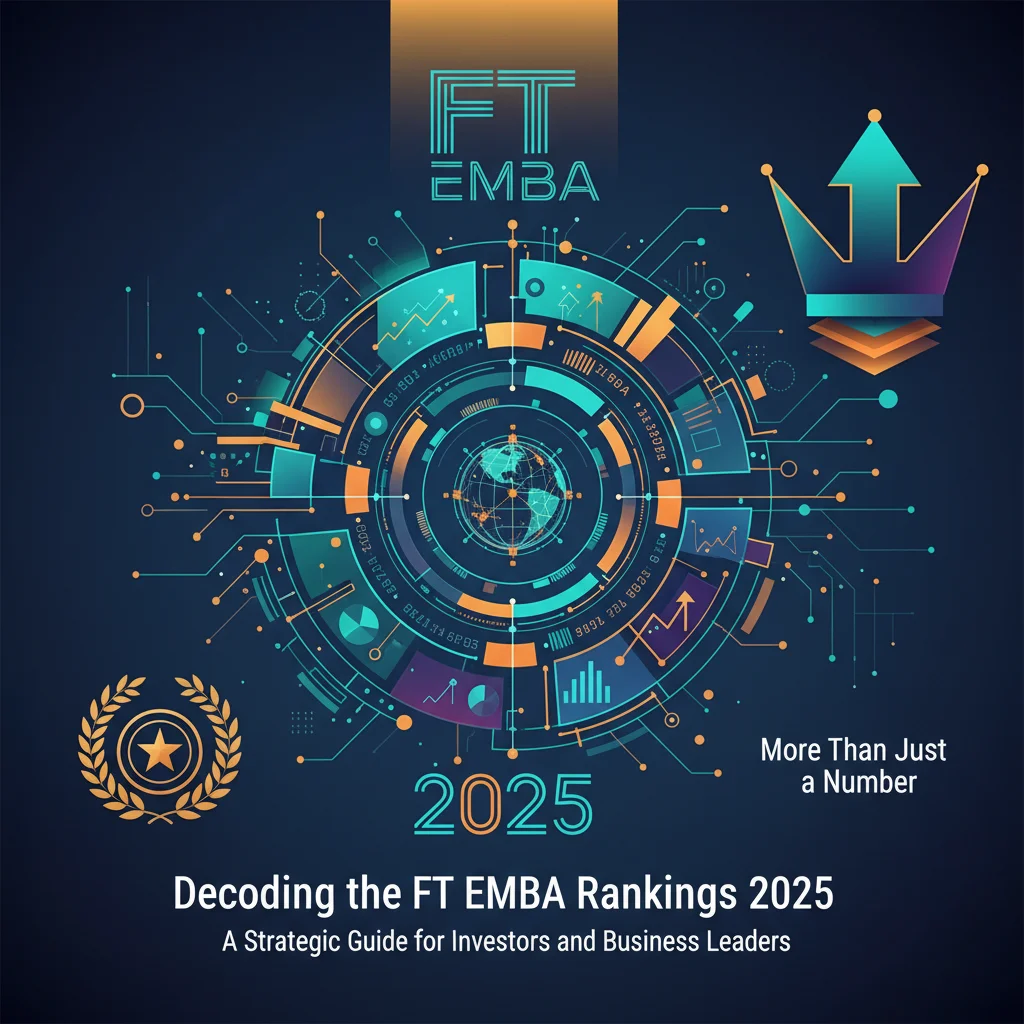
Decoding the FT EMBA Rankings 2025: A Strategic Guide for Investors and Business Leaders
The Gold Standard of Business Education: More Than Just a Number
In a global economy marked by rapid transformation and unprecedented challenges, the value of strategic leadership has never been higher. For seasoned professionals, an Executive MBA (EMBA) represents a pivotal investment—not just in a degree, but in a new trajectory of influence and impact. But with a dizzying array of programs available, how do you identify the true powerhouses? For decades, the Financial Times Executive MBA ranking has served as the definitive guide, the gold standard against which all others are measured. Yet, to treat it as a simple league table is to miss its profound strategic value.
This ranking is not merely a list; it’s a detailed mosaic of data reflecting career velocity, financial return, and the very DNA of modern business leadership. Understanding its methodology is akin to reading a sophisticated analyst report on the future of global business. It reveals what the market values, where the centers of academic innovation lie, and how top-tier institutions are shaping the leaders who will navigate the complexities of international finance, disruptive financial technology, and a shifting global economy. In this guide, we will deconstruct the 2025 FT EMBA ranking methodology, offering a unique analysis for investors, finance professionals, and the next generation of business titans.
The Anatomy of Excellence: Deconstructing the FT Ranking Criteria
The credibility of the FT ranking lies in its comprehensive and multi-faceted approach. It draws heavily on data provided by both the business schools and, crucially, their alumni three years after graduation. This dual-source method ensures a balanced view, blending institutional claims with real-world outcomes. The criteria are grouped into three main areas: career progress, diversity, and research/ESG. According to the official methodology, these pillars are weighted to provide a holistic picture of a program’s quality and impact.
Below is a breakdown of the key metrics that determine a school’s position, revealing the intricate calculus behind the coveted top spots.
| Category | Key Metrics & Weighting | What It Really Means for You |
|---|---|---|
| Career Progress & Salary | Salary Today (20%), Salary Increase (20%), Career Progress Rank, Aims Achieved | This is the direct measure of your return on investing in the degree. It quantifies the program’s ability to accelerate your earning power and elevate you to senior leadership positions. |
| Diversity & Internationalization | Female Students/Faculty, International Students/Faculty/Board, International Course Experience | Reflects the program’s ability to create a global, multifaceted learning environment. Essential for leaders in international banking and cross-border commerce. |
| Academic Strength & Social Impact | FT Research Rank, Faculty with Doctorates, ESG Rank | Measures the intellectual horsepower of the institution and its commitment to modern business ethics. A strong research rank indicates proximity to cutting-edge ideas in fields like fintech and sustainable finance. |
This structure demonstrates a clear emphasis on tangible results. A full 40% of the ranking is tied directly to alumni salaries, making it a powerful indicator for those calculating the financial viability of a six-figure educational investment.


